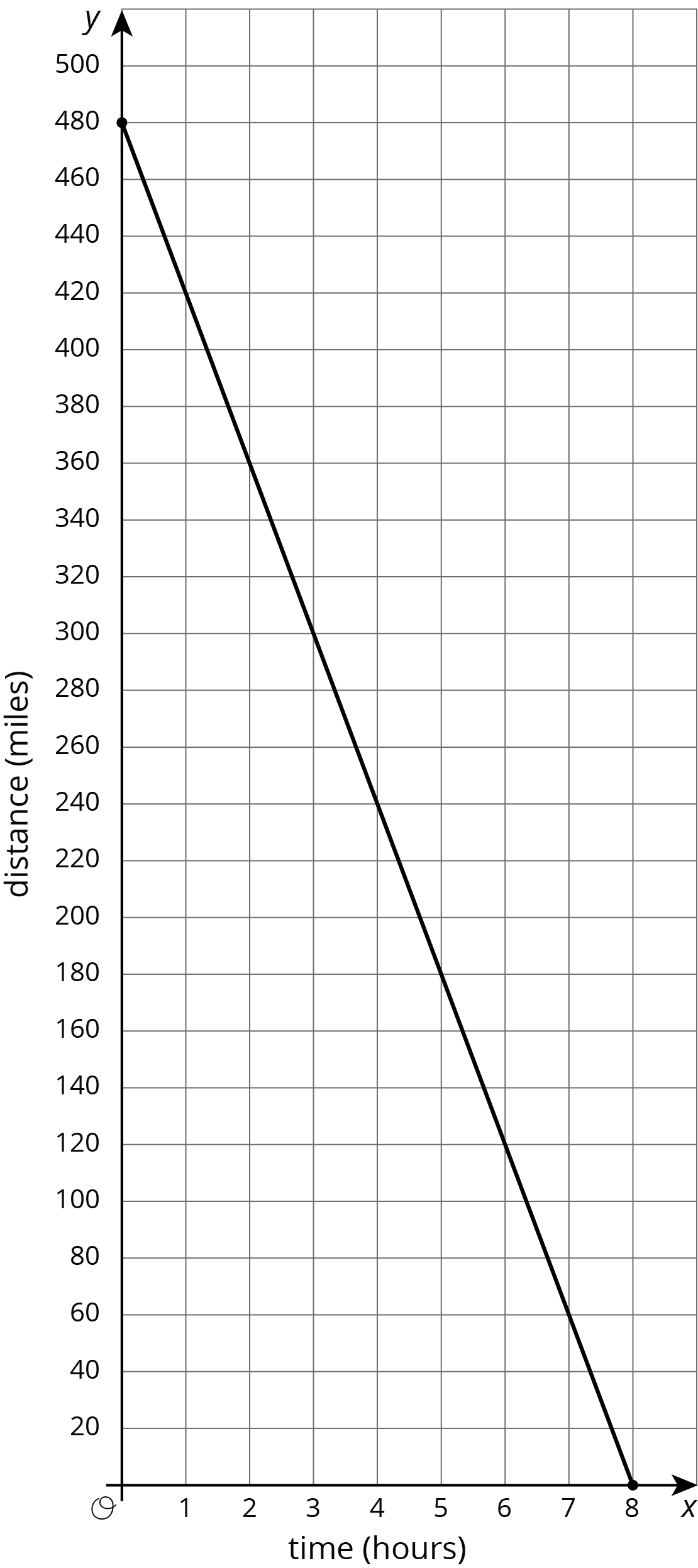Lesson 11
Representing Small Numbers on the Number Line
Let’s visualize small numbers on the number line using powers of 10.
Problem 1
Select all the expressions that are equal to \(4 \boldcdot 10^{\text-3}\):
A:
\(4 \boldcdot (\frac{1}{10}) \boldcdot (\frac{1}{10}) \boldcdot (\frac{1}{10})\)
B:
\(4 \boldcdot (\text{-}10) \boldcdot (\text{-}10) \boldcdot (\text{-}10)\)
C:
\(4 \boldcdot 0.001\)
D:
\(4 \boldcdot 0.0001\)
E:
\(0.004\)
F:
\(0.0004\)
Problem 2
Write each expression as a multiple of a power of 10:
- 0.04
- 0.072
- 0.0000325
- Three thousandths
- 23 hundredths
- 729 thousandths
- 41 millionths
Problem 3
A family sets out on a road trip to visit their cousins. They travel at a steady rate. The graph shows the distance remaining to their cousins' house for each hour of the trip.
- How fast are they traveling?
- Is the slope positive or negative? Explain how you know and why that fits the situation.
- How far is the trip and how long did it take? Explain how you know.

Problem 4
These two lines are parallel. Write an equation for each.

Problem 5
A cylinder has a radius of 4 cm and a height of 5 cm.
- What is the volume of the cylinder?
- What is the volume of the cylinder when its radius is tripled?
- What is the volume of the cylinder when its radius is halved?